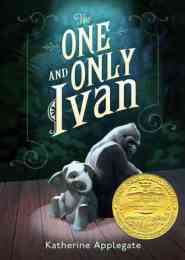I recently experienced the joy of reading Linda Ashman’s Henry Wants MORE! with my younger child. Ms. Ashman has created a book that parents will appreciate and that children won’t be able to get enough of—it is THAT good.

Henry Wants MORE! tells the story of a toddler who wants to be entertained by his family. And entertained, and entertained, and . . .
The tales of how Henry’s family tries to entertain him will be familiar to any parent who has raised a toddler and survived the experience.
The book opens with Henry’s Papa lifting Henry high in the air again and again until Papa’s arms get sore. The description brought a smile to my face as I remembered swinging both of my kids up in the air like Henry’s Papa. And my kids always wanted “MORE” when my arms couldn’t take it any longer—just like Henry and his Papa.
Any parent who has sung “Twinkle Twinkle Little Star” over and over or read Goodnight Moon for the thousandth time will appreciate when Henry’s Grandma plays Henry’s favorite song on the piano until the family’s “ears are getting weary.” But Henry simply cheers: “AGAIN!”
Everyone in Henry’s family gets into the game, helping to entertain Henry until they are all exhausted from trying to keep up with a toddler. Ms. Ashman takes the reader through Henry’s entire day until it’s time for him to go to bed.
In addition to accurately capturing the challenge of raising a toddler, Ms. Ashman has written a wonderful rhyming book that is appealing to children. By the middle of the book the first time we read it, my daughter could anticipate how Henry responded with each turn of the page, and she shouted it out with glee.
We have now read Henry Wants MORE! many times. Every time we get to Henry’s part, my daughter shouts it out loudly and with gusto. Then she laughs her delightful little-girl laugh, and I have to wait until she is done before I can move to the next page. Like I said, pure joy. Thank-you, Ms. Ashman.
Check out Linda Ashman’s website at www.lindaashman.com. There, you can find out what other fabulous books she has out this year (we have also enjoyed Rock-A-Bye Romp and All We Know, but we haven’t read her other new books yet). There are many other good resources on her website, including activity guides tied to some of Ms. Ashman’s books.
Have you read any great books lately?






 If You Ever Want to Bring An Alligator to School, DON’T! (or Alligator for short) is a wonderful tale that shares what might happen should you decide to take an alligator to school for show-and-tell. It begins by explaining that:
If You Ever Want to Bring An Alligator to School, DON’T! (or Alligator for short) is a wonderful tale that shares what might happen should you decide to take an alligator to school for show-and-tell. It begins by explaining that:









